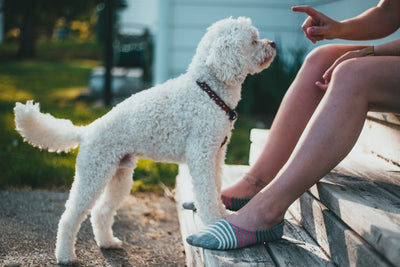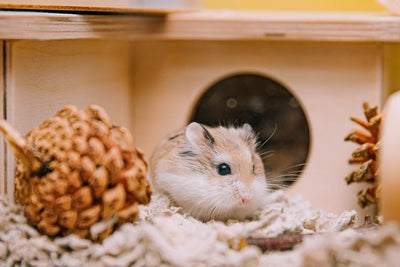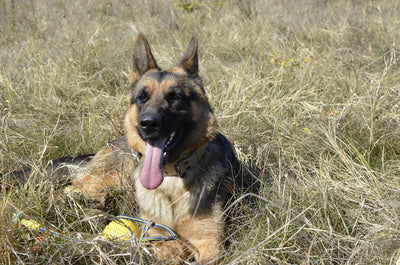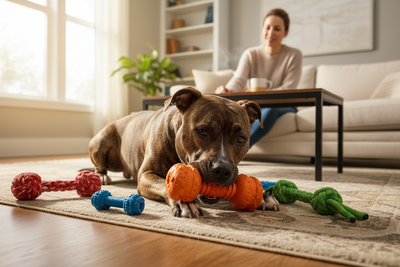
Discover a world where your canine companion's destructive tendencies transform into playful antics with our carefully curated selection of stimulating toy options. Say farewell to shredded shoes and gnawed furniture as we guide you through a myriad of engaging playthings to captivate your furry friend's attention. From mind-teasing puzzles to robust chewables, our top 10 dog toys are tailored to keep your pet entertained, satisfied, and far from household havoc. Whether your pup is an avid chewer, a bundle of boundless energy, or simply seeking extra amusement, our diverse array of toys promises something delightful for every furry pal. Bid adieu to monotony and usher in a realm of well-behaved, gleeful pups with our expertly chosen range of canine entertainment essentials!.
Common Causes of Destructive Behavior
Lack of Mental Stimulation
One of the common causes of destructive behavior in pets is a lack of mental stimulation. Pets, especially dogs and cats, are intelligent creatures that require mental challenges to stay engaged. When they do not receive enough mental stimulation through activities like interactive toys, training, or puzzles, they may resort to destructive behaviors like chewing furniture or excessive barking.
Anxiety and Stress
Anxiety and stress can also lead to destructive behavior in pets. Just like humans, pets can experience anxiety due to various reasons such as separation from their owners, loud noises, or changes in their environment. This anxiety can manifest in destructive behaviors like digging, scratching, or even aggression. It's essential for pet owners to identify the root cause of their pet's anxiety and work on addressing it to prevent destructive behaviors.
Boredom and Excess Energy
Pets that are bored or have excess energy are more likely to engage in destructive behaviors as a way to release pent-up energy. Dogs, in particular, are known to exhibit destructive behaviors like digging, chewing, or excessive barking when they are bored. Providing regular exercise, interactive playtime, and mental stimulation can help channel their energy in a positive way and reduce the likelihood of destructive behaviors.
Additional Ways to Combat Destructive Behavior
Apart from addressing the common causes mentioned above, there are several other strategies that pet owners can employ to combat destructive behavior in their pets. Enriching the environment by introducing new toys, rotating existing toys to prevent boredom, and creating a safe space for pets to retreat to when they feel anxious can all contribute to reducing destructive behaviors.
Training and positive reinforcement are also vital tools in managing destructive behavior. Teaching pets appropriate behaviors through training sessions and rewarding good behavior can help redirect their focus and prevent destructive tendencies. Consistency in training and providing mental challenges can go a long way in keeping pets mentally stimulated and less likely to engage in destructive activities.
Conclusion
Understanding the root causes of destructive behavior in pets and taking proactive steps to address them is essential for maintaining a harmonious relationship between pets and their owners. By providing adequate mental stimulation, addressing anxiety triggers, and ensuring pets have sufficient outlets for their energy, pet owners can help prevent destructive behaviors and foster a happy and healthy environment for their furry companions.
Benefits of Using Toys to Curb Destructive Behavior
Promoting Mental Stimulation and Problem-Solving
Toys are not just for play; they can also serve as valuable tools in promoting mental stimulation and problem-solving skills in pets. Interactive toys, puzzles, and treat-dispensing toys engage a pet's mind, keeping them mentally active and preventing boredom. By challenging their problem-solving abilities, toys can help reduce destructive behaviors driven by a lack of mental stimulation. Providing a variety of toys that offer different challenges can further enhance cognitive development and keep pets engaged for longer periods, benefiting their overall mental well-being.
Channeling Excess Energy in a Positive Way
Pets, especially young and energetic ones, often exhibit destructive behaviors when they have excess energy that needs an outlet. Toys designed for physical activity, such as balls for fetching, ropes for tug-of-war, and chew toys for gnawing, offer a healthy and positive way for pets to release their pent-up energy. Regular play sessions with these toys not only provide an avenue for physical exercise but also strengthen the bond between pets and their owners. Additionally, toys that encourage interactive play, like laser pointers or feather wands for cats, can help redirect excess energy into fun and engaging activities, reducing the likelihood of destructive behaviors.
Encouraging Natural Instincts and Behaviors
Toys that mimic natural behaviors or activities can help satisfy a pet's innate instincts and prevent them from exhibiting destructive tendencies. For instance, toys that simulate hunting or foraging behaviors can appeal to a cat's predatory nature or a dog's scavenging instincts. By engaging in these natural behaviors through play, pets can experience mental satisfaction and physical fulfillment, reducing the urge to engage in destructive actions out of boredom or frustration. Providing toys that cater to specific breed characteristics or preferences can further enhance the play experience and effectively address destructive behaviors associated with unmet needs.
Conclusion
The benefits of using toys to curb destructive behaviors in pets extend beyond simple entertainment. By incorporating a variety of toys that promote mental stimulation, physical activity, and natural instincts, pet owners can effectively redirect negative behaviors and enhance their pet's overall well-being. Investing time and effort in selecting the right toys for your pet's needs can lead to a harmonious coexistence and a happier, healthier relationship between pets and their owners.
Addressing Destructive Behavior in Dogs
When it comes to addressing destructive behavior in dogs, it's essential to understand the underlying causes and how interactive puzzle toys can play a significant role in minimizing such behaviors. Dogs, especially those with high energy levels or those left alone for extended periods, often resort to destructive actions like chewing on furniture or excessive barking out of boredom, lack of mental stimulation, or separation anxiety. These behaviors not only damage your belongings but can also be distressing for your furry friend. This is where the strategic use of interactive puzzle toys can make a real difference in your dog's life.
Interactive puzzle toys are designed to challenge your dog's cognitive abilities and keep them engaged for extended periods. By presenting a mental challenge that requires problem-solving skills to access treats or rewards hidden inside the toy, these toys provide mental stimulation that is crucial for a dog's overall well-being. This mental engagement not only prevents boredom but also helps in tiring out your pup in a constructive manner, reducing the likelihood of engaging in unwanted behaviors.
Moreover, interactive toys serve as an excellent outlet for your dog's natural instincts, such as foraging and hunting. These toys tap into your dog's innate drive to work for their food, mimicking the thrill of the hunt in a safe and controlled environment. By satisfying these primal instincts, interactive puzzle toys offer a mentally enriching experience that goes beyond mere physical exercise.
In addition to reducing destructive behaviors, interactive puzzle toys can also strengthen the bond between you and your dog. Playing together with these toys not only provides a fun and interactive experience but also fosters trust and communication between you and your furry companion. It's a rewarding way to spend quality time with your dog while promoting their mental and physical well-being.
Therefore, when selecting toys for your canine companion, consider incorporating a variety of interactive puzzle toys into their playtime routine. By offering mental challenges, physical exercise, and a source of entertainment, these toys can significantly contribute to a happier, healthier, and better-behaved dog. Investing in interactive puzzle toys is an investment in your dog's happiness and overall quality of life.
Choosing the Right Toy for Your Dog
Factors to Consider for Effective Toy Selection
Selecting the perfect toy for your furry companion involves various considerations that can enhance their playtime and overall well-being. To ensure you make the right choice, here are some crucial factors to ponder:.
-
Size and Breed Appropriateness Choosing a toy that aligns with your dog's size and breed characteristics is fundamental. Large, robust toys may be suitable for larger breeds with strong jaws, while smaller or plush toys could be ideal for smaller breeds or puppies.
-
Activity Level Matching Understanding your dog's activity level is key to selecting a toy that matches their energy. High-energy dogs may benefit from toys that promote physical activity, such as balls or frisbees, while less active dogs may prefer puzzle toys for mental stimulation.
-
Material and Texture Preferences Dogs have varying material and texture preferences when it comes to toys. Some may enjoy plush toys for comfort, while others may prefer rubber or nylon toys for chewing. Consider your dog's preferences to ensure they engage with the toy.
-
Interactive vs. Solo Play Determining whether your dog enjoys interactive play with you or independent solo play can guide your toy selection. Interactive toys like tug ropes or treat-dispensing toys can strengthen the bond between you and your pet, while chew toys can provide independent entertainment.
-
Durability and Longevity Investing in durable toys that can withstand your dog's play habits is essential for longevity. Look for toys made from sturdy materials that can endure chewing and rough play to prevent frequent replacements.
Safety and Durability Guidelines
Ensuring the safety and durability of your dog's toys is paramount to prevent any mishaps or health concerns. Adhering to these guidelines can promote a safe play environment:.
-
Avoid Small Parts or Pieces To prevent choking hazards, opt for toys without small detachable parts that could be swallowed.
-
Opt for Non-Toxic Materials Choose toys made from non-toxic materials to safeguard your dog's health, especially if they have a tendency to chew or ingest parts of the toy.
-
Regularly Inspect for Wear and Tear Check your dog's toys frequently for signs of damage or wear. Replace any worn-out or broken toys to prevent potential injuries.
-
Supervise Playtime Always supervise your dog during playtime, especially with new toys or those prone to damage. Monitoring their interactions can prevent accidents or ingestion of toy fragments.
-
Consider Age Recommendations Some toys are designed for specific age groups based on developmental stages. Adhere to age recommendations to ensure the toy is suitable for your dog's maturity and play style.
By carefully considering these factors and guidelines, you can select the perfect toy that will enrich your dog's play experiences, promote engagement, and prioritize their safety. Remember, a well-chosen toy can lead to hours of joy and entertainment for your beloved pet. Happy playing!.
Incorporating Toys into Daily Routine
Strategies for Introducing and Rotating Toys
When it comes to incorporating toys into the daily routine of your pet, it's essential to consider various strategies to keep them engaged and stimulated. Introducing new toys periodically can prevent boredom and provide mental stimulation. Rotating toys can also help maintain your pet's interest and prevent them from getting tired of the same toys. Consider different types of toys such as interactive toys, puzzle toys, and chew toys to cater to your pet's needs.
Incorporating Toys into Training and Playtime
Toys can play a significant role in training and playtime with your pet. Use toys as rewards during training sessions to reinforce positive behavior. Interactive toys can also be used to engage your pet in playtime activities, promoting exercise and bonding. Make sure to choose toys that are safe and appropriate for your pet's size and breed. By incorporating toys into training and playtime, you can make these activities more enjoyable and beneficial for both you and your pet.
Enhancing Bonding Through Playtime
Playtime is not just about fun and games; it's also an opportunity to strengthen the bond between you and your pet. When engaging in playtime with your pet, consider interactive toys that allow for shared activities. Tug-of-war ropes, fetch balls, and treat-dispensing toys can all enhance the bond you share with your furry friend. Additionally, incorporating playtime into your daily routine can create a sense of predictability and security for your pet, leading to a happier and more well-adjusted companion.
Promoting Physical and Mental Stimulation
Toys are not only a source of entertainment but also important tools for promoting physical and mental stimulation in pets. Puzzle toys, for example, can challenge your pet's problem-solving skills and provide hours of entertainment. Interactive toys that require your pet to think and strategize can prevent cognitive decline and keep their minds sharp. Furthermore, toys that encourage physical activity, such as agility equipment or fetch toys, can help maintain your pet's physical health and prevent obesity.
Safety Considerations and Toy Maintenance
While incorporating toys into your pet's daily routine, it's crucial to prioritize safety and toy maintenance. Regularly inspect toys for signs of wear and tear, such as loose parts or sharp edges, and replace them as needed. Avoid toys with small parts that could be swallowed or pose a choking hazard. When selecting toys, opt for materials that are non-toxic and durable to withstand your pet's playtime activities. By ensuring the safety and quality of your pet's toys, you can provide them with a stimulating and secure play environment.
Incorporating toys into your pet's daily routine offers numerous benefits for their physical, mental, and emotional well-being. By following strategies for introducing and rotating toys, incorporating toys into training and playtime, enhancing bonding through playtime, promoting physical and mental stimulation, and prioritizing safety considerations and toy maintenance, you can create a stimulating and enriching environment for your beloved companion.
Conclusion
Choosing the right toys for your dog is essential in keeping them mentally stimulated and preventing destructive behavior. By providing engaging toys that cater to their natural instincts and energy levels, you can help your furry friend stay happy, healthy, and well-behaved. Remember to rotate toys regularly to keep their interest piqued and consider interactive toys that promote physical activity and mental enrichment. Investing in quality toys for your dog is not just about playtime—it's about fostering a strong bond and ensuring their overall well-being.






